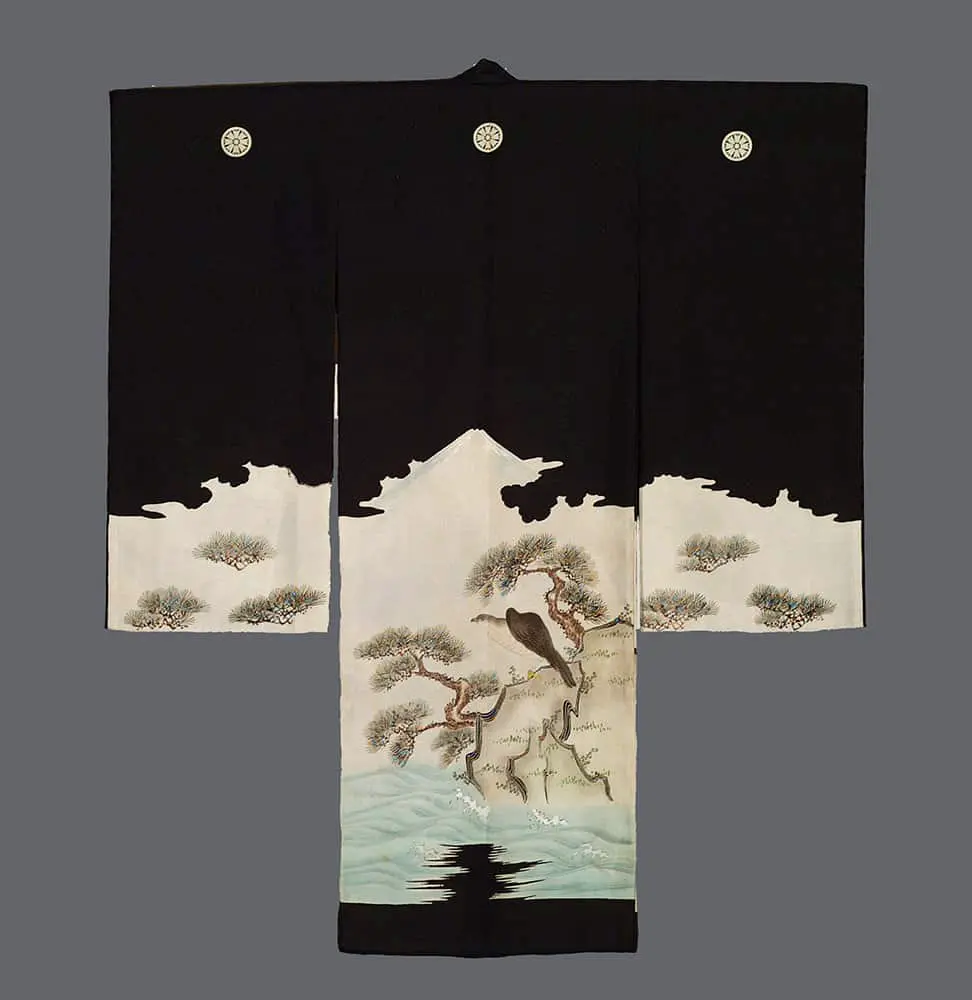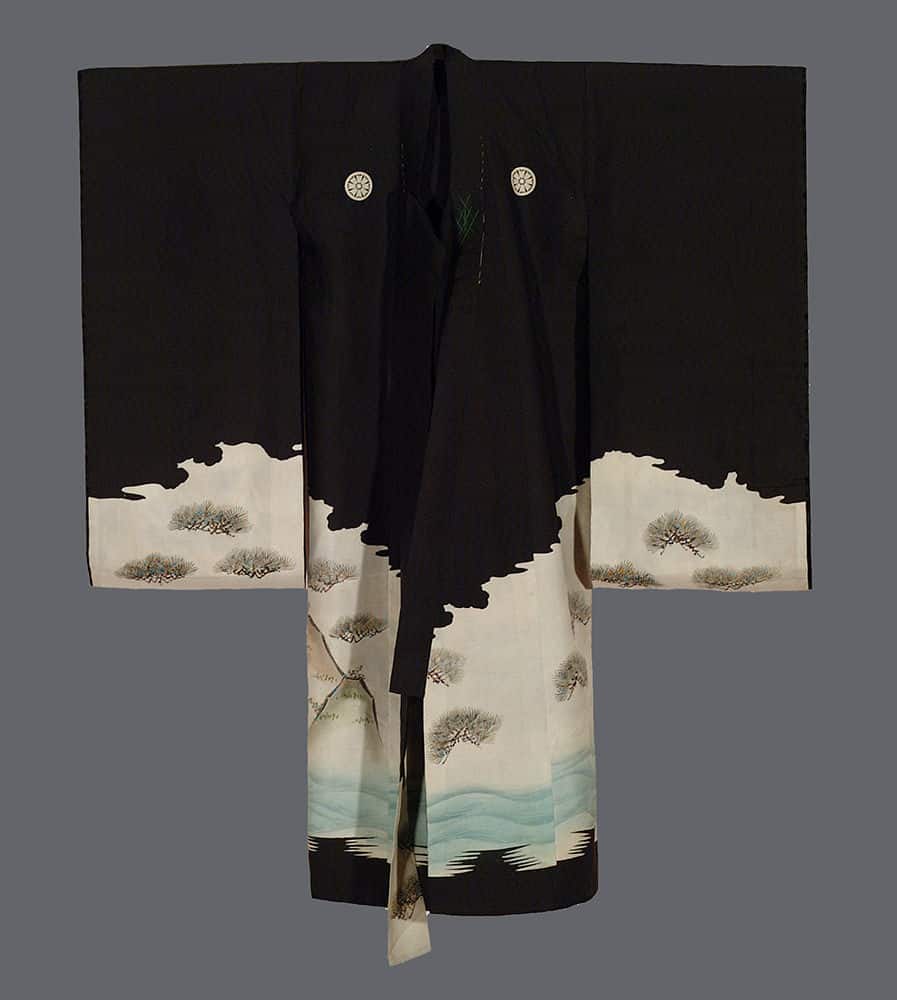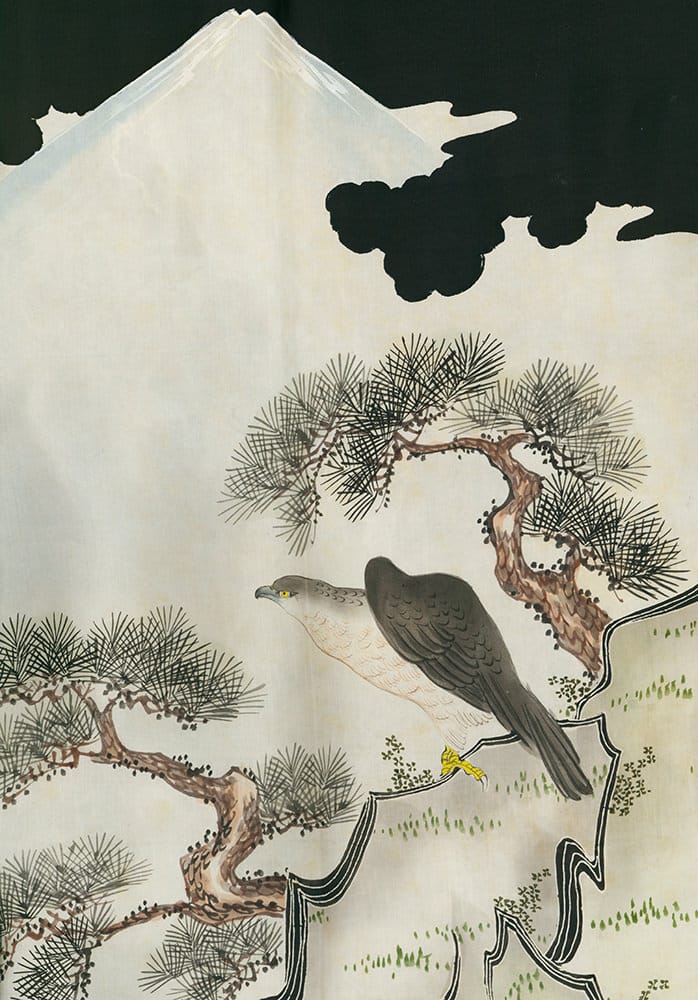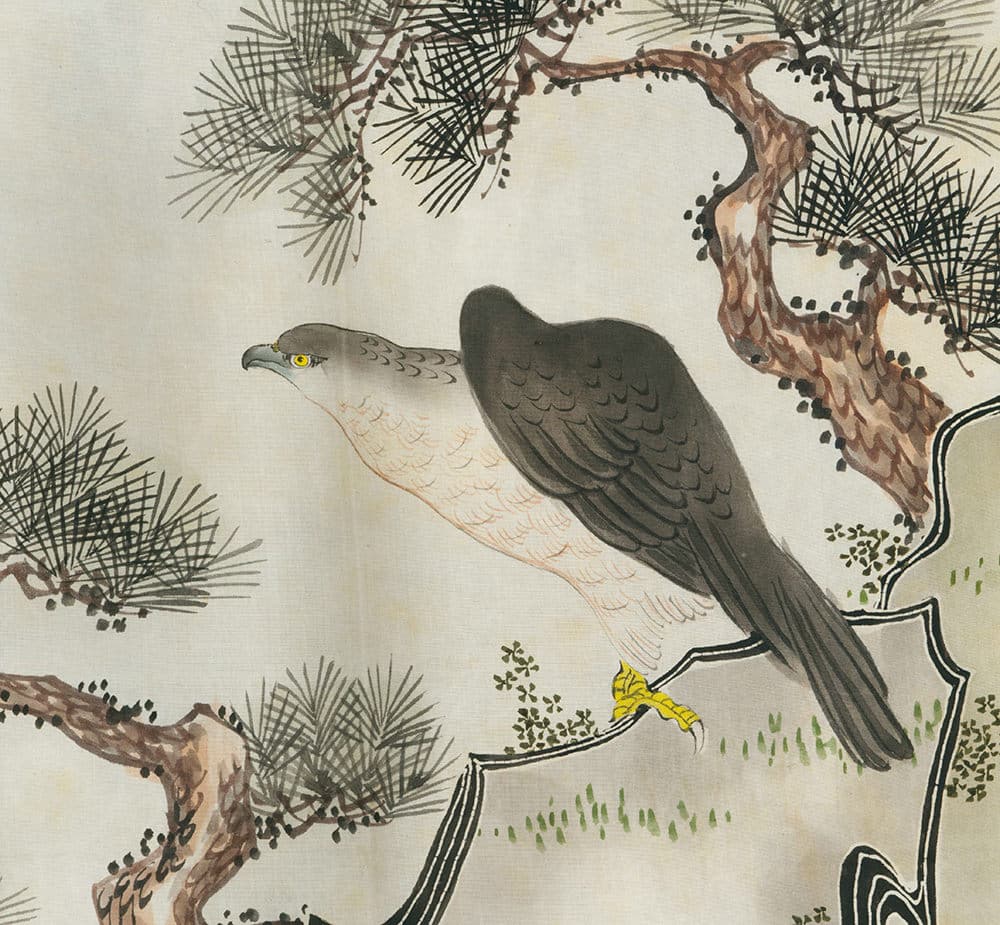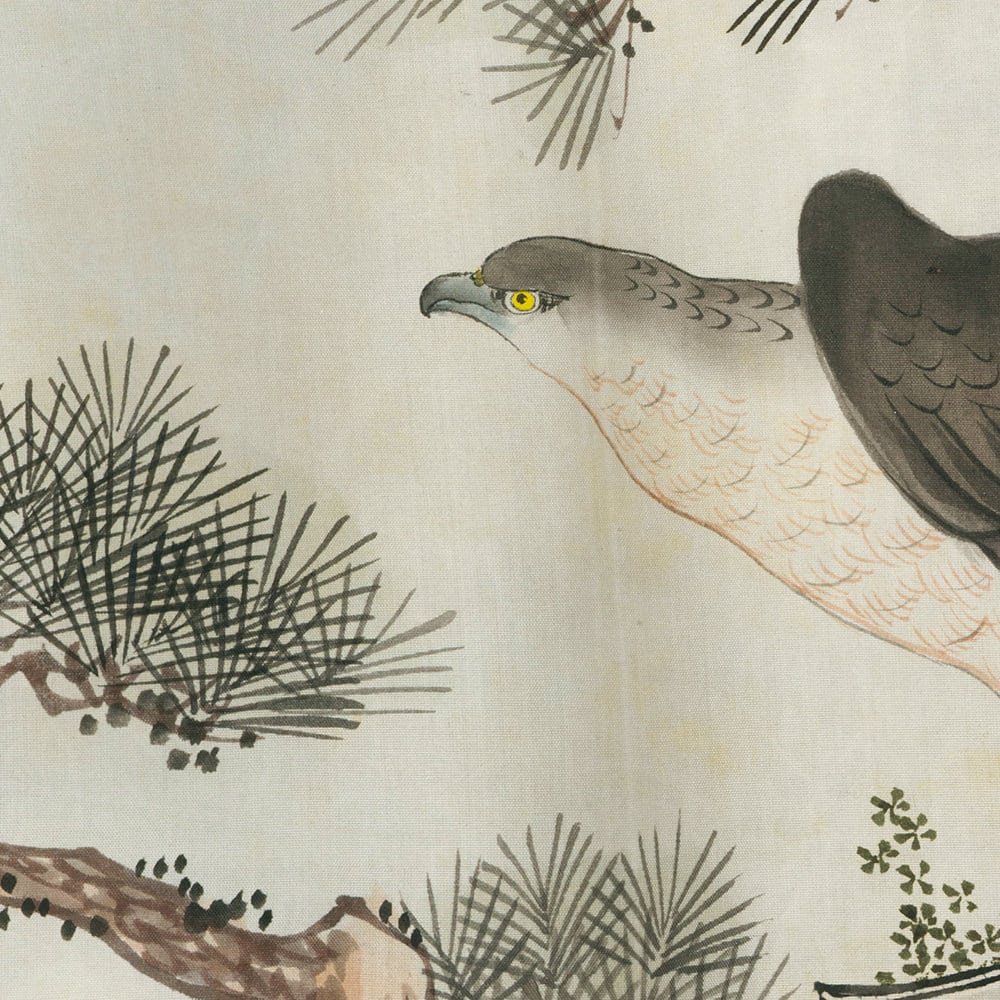This ceremonial miyamairi kimono exemplifies the sophisticated artistic traditions of late Edo to early Meiji period Japan, embodying a visual philosophy that would profoundly influence the emerging Japonisme movement in European decorative arts. The composition demonstrates the Japanese mastery of asymmetrical balance and negative space, with the dramatic contrast between the deep black upper portion and the cream-colored lower section creating a bold graphic statement that anticipates modernist design principles. The irregular, cloud-like border between these zones reflects the Japanese aesthetic concept of naturalness within formal structure.
The painted motifs carry profound symbolic meaning appropriate for a coming-of-age ceremony. Mount Fuji, rendered in subtle gradations of white and pale blue, represents spiritual ascension, permanence, and the sacred connection between earth and heaven. The pine trees, with their gnarled branches and needle clusters meticulously detailed, symbolize longevity, steadfastness, and the ability to endure life's challenges—particularly significant for a young person entering adulthood. The hawk, depicted with remarkable naturalistic precision in its feather patterns and alert posture, embodies keen vision, nobility, and the power to rise above earthly concerns.
The artistic execution reflects the influence of both the Rinpa school's decorative sensibilities and the naturalistic traditions of bird-and-flower painting (kachō-ga). The way the composition flows across the garment's form, with elements appearing to continue beyond the visible boundaries, demonstrates the Japanese understanding of clothing as a three-dimensional canvas. The restrained color palette of black, cream, soft blues, and earth tones, punctuated by the golden family crests, creates an effect of dignified elegance that speaks to both the wearer's social status and spiritual significance of the occasion.
Measuring approximately 30 inches from sleeve-end to sleeve-end and standing 33 inches tall (76 cm x 84 cm)
This artwork is featured on pages 310-311 of Ceremonial Textiles of Japan, 18th to 20th Centuries. This book, published by Yorke Antique Textiles, can be previewed or purchased on our website here.
.avif)

